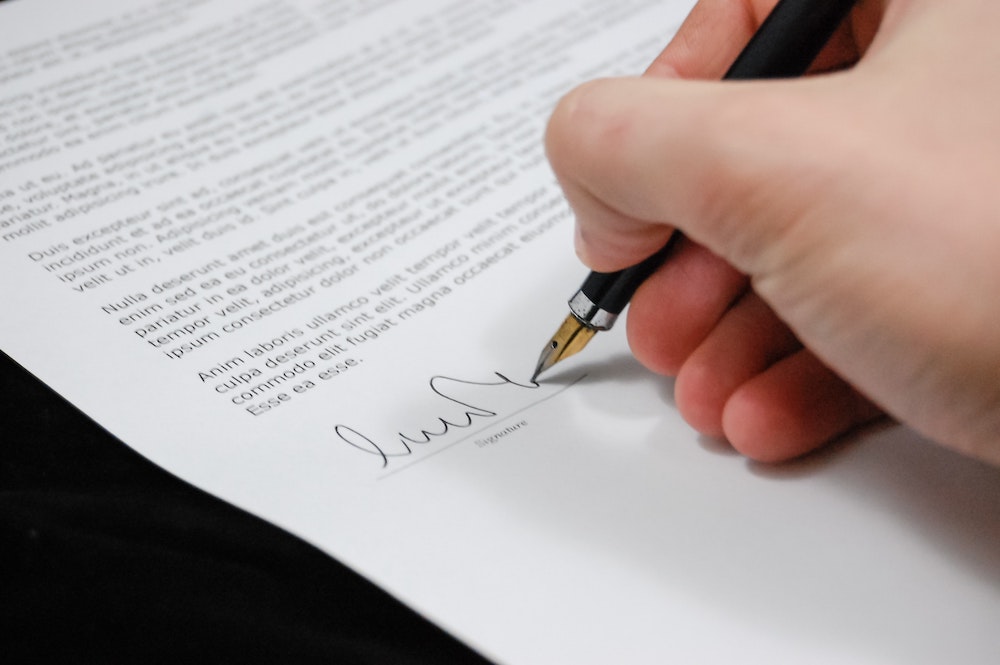GET IN TOUCH
Please contact us for more information. Our email is monitored seven days a week and we will get back to you shortly.

A will is invalid in BC if it isn’t compliant with the formal requirements of the Wills, Estates and Succession Act (WESA). In British Columbia, courts have the power to “cure” an invalid will which still represents the intentions of a testator. But how do the courts discern the true intentions of a testator with an invalid will? In this article, we’ll go over the principles surrounding extrinsic evidence interested parties can submit to support the court in curing an invalid will.
Under WESA, for a will to be valid in BC it must satisfy three requirements:
According to WESA, the will-writer must sign the end of the will while in the presence of two or more witnesses in order to create a valid will. Basically, you must have two people witness you sign the last page of your will. Importantly, witnesses can’t be beneficiaries of the will, or the spouse of the will-writer. Further, the will must be in writing. A video or voice recording is not a valid legal will under WESA.
According to s. 58 of the Wills, Estates and Succession Act (WESA), the courts have the ability to make a curative provision to an invalid will. Essentially, this means that if a will does not satisfy the above requirements, the courts can “fix” the deficiencies of the will and validate it. If a judge is satisfied that the owner wrote the will and it truly represents the owner’s intentions at the time of their death, they can cure the invalid will.

In the case of Hadley Estate (Re), 2017 BCCA 31, the judge discussed the difficulty of discerning if a non-compliant document expresses the testamentary intentions of its writer. This is because, obviously, the person most able to express those intentions has already passed away. Invalid wills, drafted without a lawyer’s help, are more likely to be unclear in their use of legal language. Because of these challenges, interested parties are able to submit extrinsic evidence to aid the courts. Extrinsic evidence can be almost any material which relates to or demonstrates the will writer’s testamentary intentions.
In curing a will, the court aims to ensure that, even though the document is invalid due to WESA non-compliance, it still expresses the fixed and final testamentary wishes of its writer. To demonstrate that the will should or should not be cured, evidence that could be submitted includes:
There are numerous examples in BC case law which demonstrate admissible extrinsic evidence to support the courts in curing a will. In the recent case of the Skopyk Estate (2017), a will writer told his family that his will from 1995 didn’t express his current wishes, and that he was working on a new one. He passed shortly after, but family found an unsigned handwritten document in his apartment after his death. Even though the document was unsigned, the court cured the document based on the following extrinsic evidence:
Based on the above evidence, the court found that the note was a deliberate expression of the deceased’s final wishes. The court ordered that the document was a valid alteration to the pre-existing 1995 will.
In Dickinson-Starkey Estate (Re) (2022), the deceased’s nephew sought legal assistance in locating his uncle’s valid will. There was no notice of will in force, and no document was found. He gained access to his uncle’s house using a neighbour’s spare key, and found a folder labelled “will” with the deceased’s name and address. The writer had stored the folder with items including antiques, family photos, expensive liquor, crystal and china. The document was lengthy and detailed, and clearly intended to serve as a will. However, the court couldn’t cure it under s. 58 based on the following discrepancies:
On the balance of probabilities, the court couldn’t determine that the deceased intended the document to express his fixed and final intentions. The deceased was likely still considering the contents of the document at the time of his death. Unfortunately, this meant that the estate had to be distributed according to the laws of intestacy, as the deceased had not written another will.
Even though beneficiaries may have recourse if WESA finds your DIY will to be invalid, it’s always best to have a valid will in the first place. The process of applying to have a testamentary document cured under s. 58, gathering evidence and presenting it to the court can be time consuming and costly for loved ones. It is always best to seek legal advice when preparing your will, at least to ensure that it is valid under WESA and can be easily probated and executed after your death. If you have questions about the validity of your DIY will, or are ready to start your estate plan from scratch, contact an experienced estate lawyer today.
Have a question about this topic or a different legal topic? Contact us for a free consultation. Reach us via phone at 250-888-0002, or via email at info@leaguelaw.com.